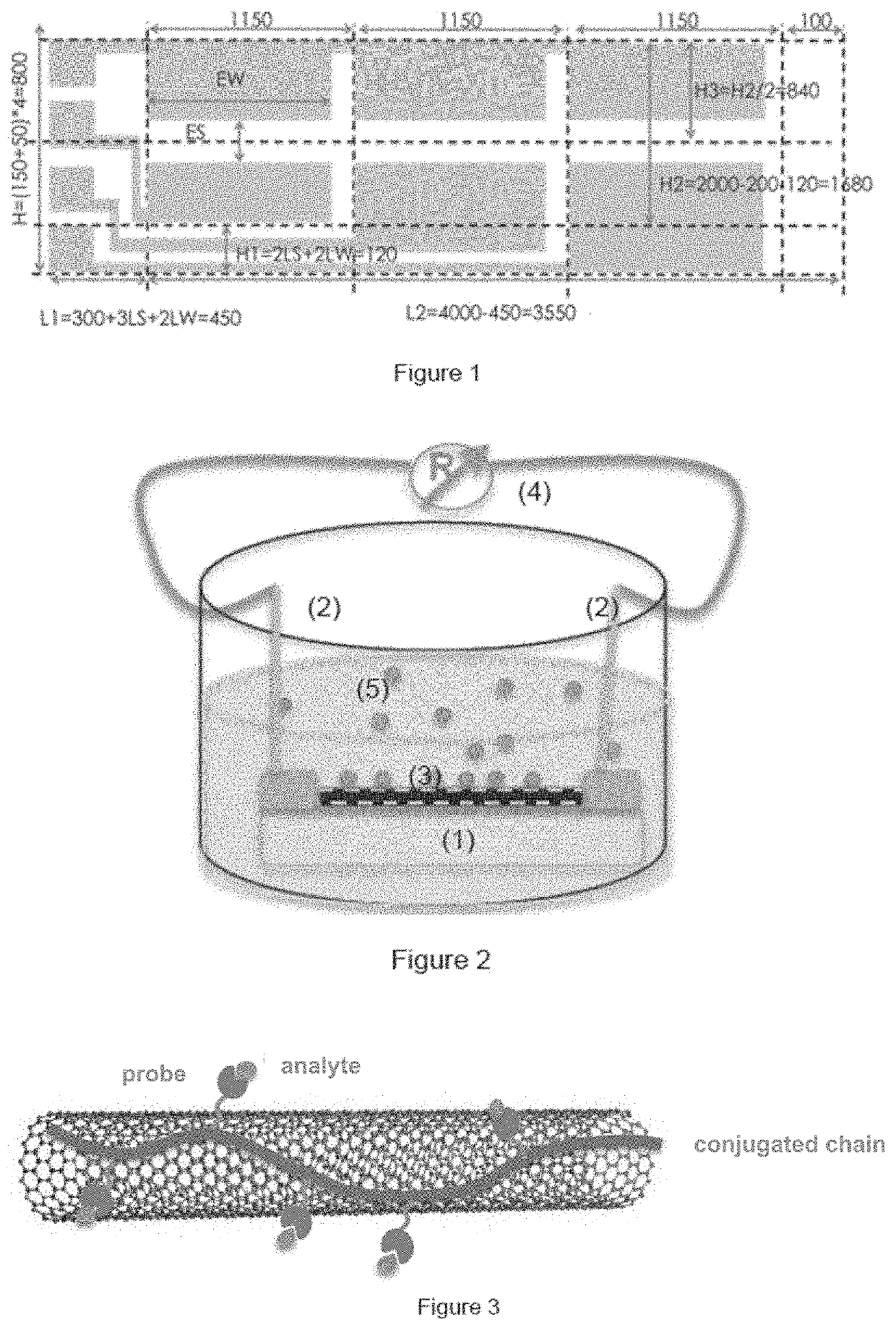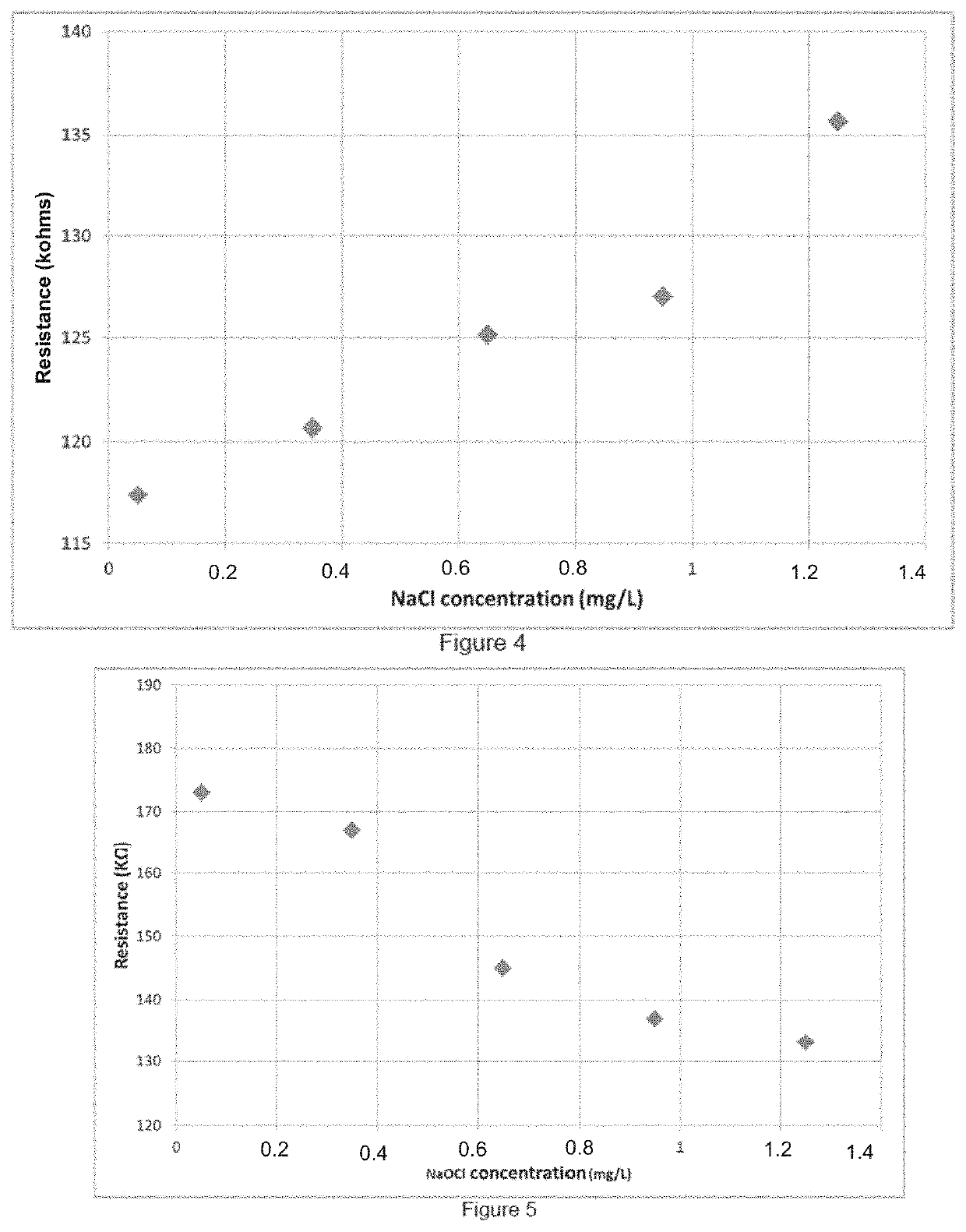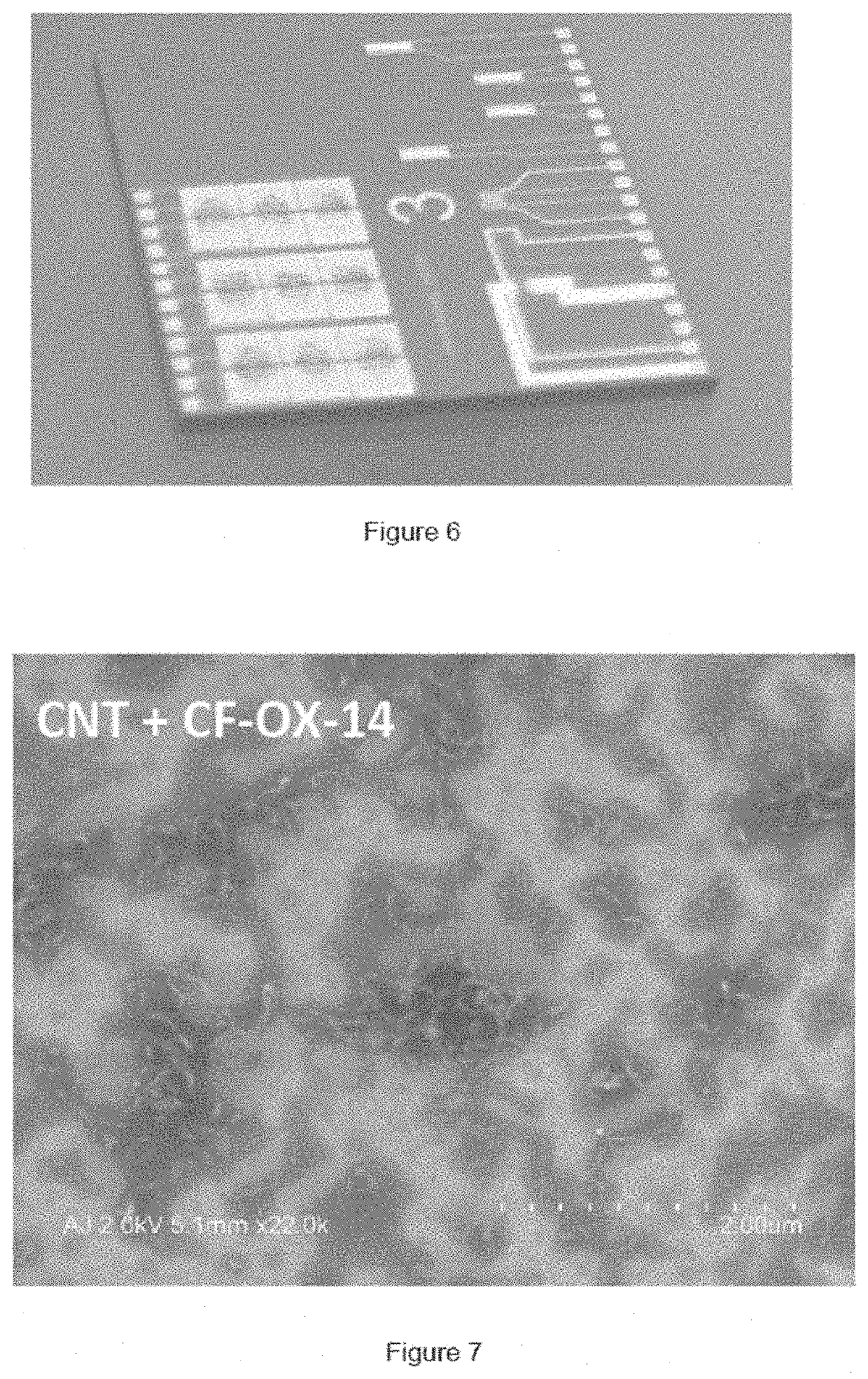Chemical sensors based on carbon nanotubes functionalised by conjugated polymers for analysis in aqueous medium
a technology of conjugated polymers and chemical sensors, applied in the field of miniature chemical sensors, can solve the problems of increasing the cost of analysis, not allowing real-time data collection, and generally relatively complex instruments used, and achieve the effect of moderate cos
- Summary
- Abstract
- Description
- Claims
- Application Information
AI Technical Summary
Benefits of technology
Problems solved by technology
Method used
Image
Examples
example 1
Synthesis of the Polymer of Formula 8 for the Detection and / or Quantification of Hypochlorite Ions
[0157]The compound of formula 1 of the reaction diagram hereinafter is synthesised as described in Photochemical and Photobiological Sciences, 2013, 12, 284-297. The compound of formula 2 is synthesised as described in Journal of Chemical Sciences, 2015, 127, 383-394.
[0158]The compound of formula 7 is synthesised from compound 2 as follows. Compound 2 (850 mg; 0.15 mmol), 2,2′-(9,9-dihexyl-9H-fluorene-2,7-diyl)bis(1,3,2-dioxaborinane) (500 g; 0.85 mmol) and the catalyst Pd(PPh3)4 (50 mg; 0.04 mmol) are dissolved in 30 mL of degassed toluene. 6 mL of an aqueous potassium carbonate solution (590 mg; 4.27 mmol) is added. The reaction medium is heated to reflux in an inert atmosphere for 3 days. 9 μL (0.085 mmol) of bromobenzene is added to remove the terminal boronic arylester functions; after 6 hours of stirring, 10 mg (0.085 mmol) of phenylboronic acid is added to remove the terminal ary...
example 2
Synthesis of the Polymer of Formula 9 for the Detection and / or Quantification of Chloride Ions
[0162]Compound 3 of the reaction diagram hereinafter is synthesised as described in Macromolecules, 2005, 38, 745-751: aniline is added to a mixture of 2,7-dibromo-9-fluorenone and aniline hydrochloride in an argon atmosphere. The reaction medium is 4heated to 150° C. for 6 hours, then cooled to ambient temperature. The reaction medium is poured into the water and extracted with ethyl acetate. Compound 3 is obtained after recrystallisation in hexane.
[0163]Compound 4 of the reaction diagram hereinafter was synthesised as follows. 0.22 mL (1.9 mmol) of phenyl isocyanate is added dropwise to a solution of 400 mg (0.8 mmol) of compound 3 in 10 mL of dichloromethane in an argon atmosphere. The reaction mixture is stirred for 4 hours at ambient temperature, then 20 mL of diethyl ether is added. Compound 4 (410 mg, 69% yield) is obtained in grey solid form after filtration and washing with 50 mL o...
example 3
Synthesis of the Polymer of Formula 10 for the Joint Detection and / or Quantification of Ca2+ and Mg2+ Ions
[0167]Compound 5 of the reaction diagram hereinafter was synthesised from compound 3 of the reaction diagram hereinafter, as follows. 124 mg (0.9 mmol) of potassium carbonate and 15 mg (0.09 mmol) of potassium iodide are added to a solution containing 500 mg (1 mmol) of compound 3 in THF at ambient temperature. 1.38 g (9 mmol) of methyl bromoacetate is then slowly added. The reaction medium is stirred for 18 hours at 100° C., then poured into water. The precipitate is filtered and dried. 596 mg (0.75 mmol) of compound 5 is obtained in the form of a light orange solid.
[0168]1H NMR (300 MHz, CDCl3): δ 7.54-7.51 (d, 2H), 7.44-7.41 (d, 4H), 6.98-6.96 (d, 4H), 6.47-6.44 (t, 4H), 4.10 (s, 4H), 3.74 (s, 12H).
[0169]Compound 6 of the reaction diagram above was synthesised as follows. 2 ml (5 mmol) of an aqueous sodium hydroxide solution is added slowly to a solution of 477 mg of compound...
PUM
| Property | Measurement | Unit |
|---|---|---|
| molar mass | aaaaa | aaaaa |
| molar mass | aaaaa | aaaaa |
| molar mass | aaaaa | aaaaa |
Abstract
Description
Claims
Application Information
 Login to View More
Login to View More - R&D
- Intellectual Property
- Life Sciences
- Materials
- Tech Scout
- Unparalleled Data Quality
- Higher Quality Content
- 60% Fewer Hallucinations
Browse by: Latest US Patents, China's latest patents, Technical Efficacy Thesaurus, Application Domain, Technology Topic, Popular Technical Reports.
© 2025 PatSnap. All rights reserved.Legal|Privacy policy|Modern Slavery Act Transparency Statement|Sitemap|About US| Contact US: help@patsnap.com



